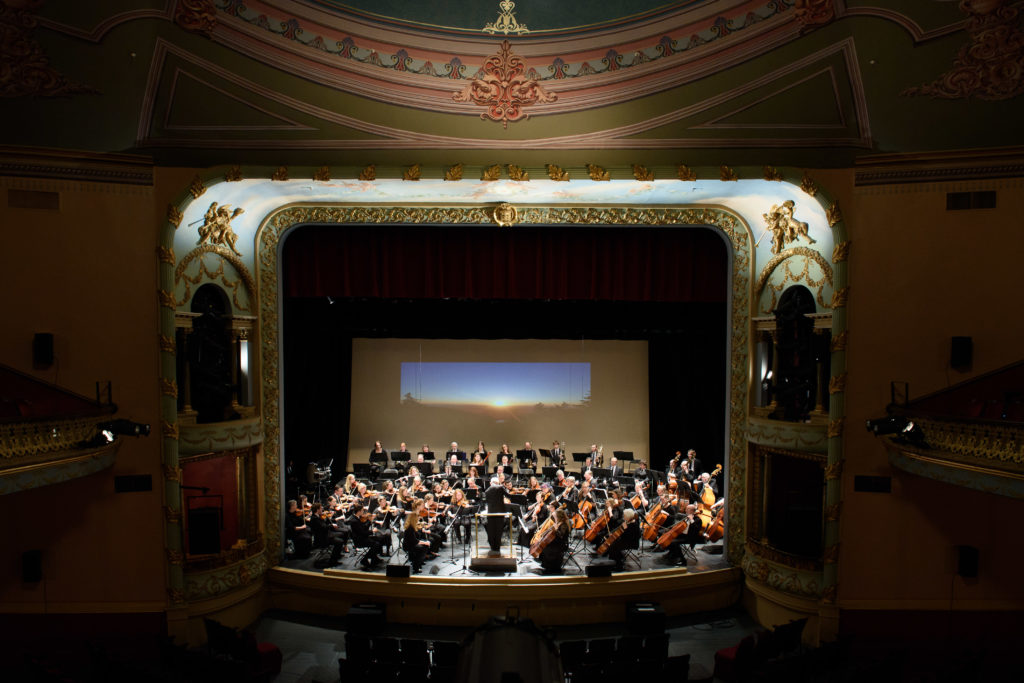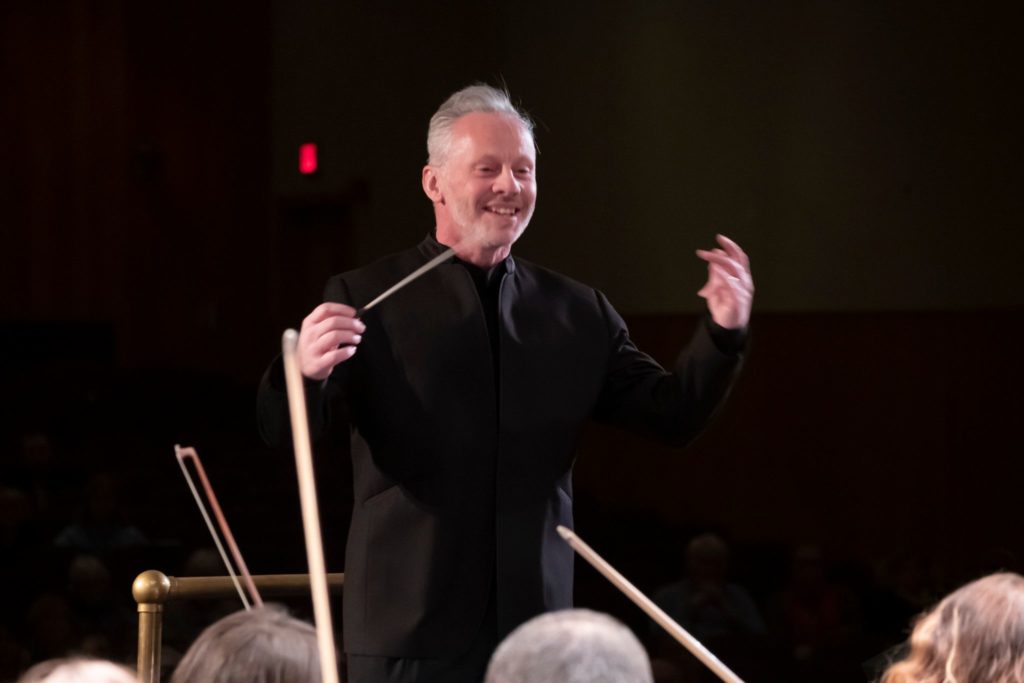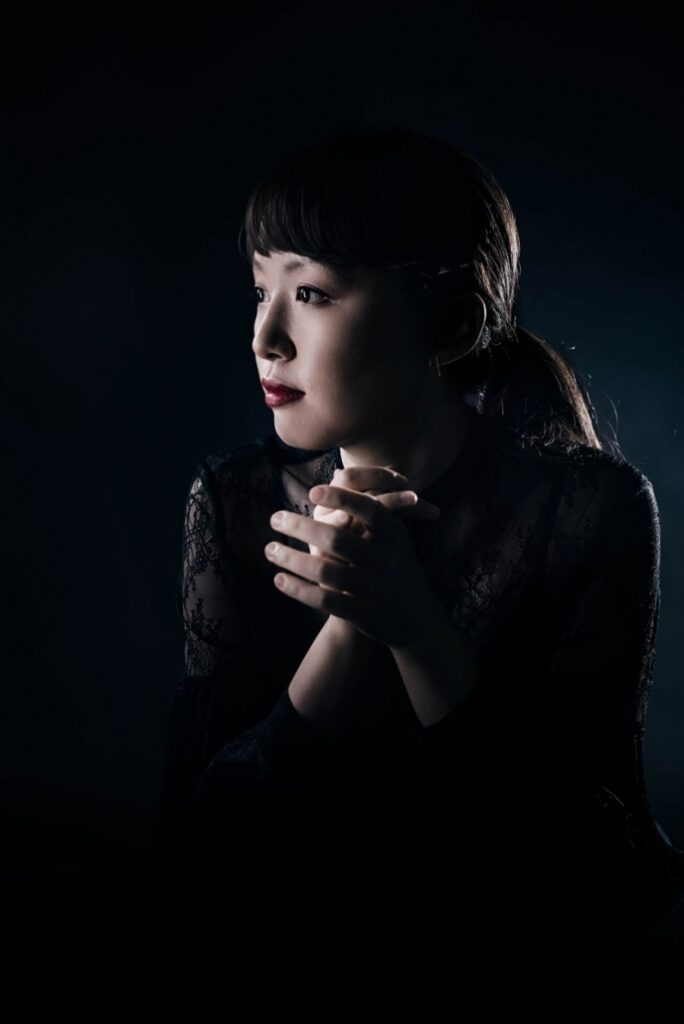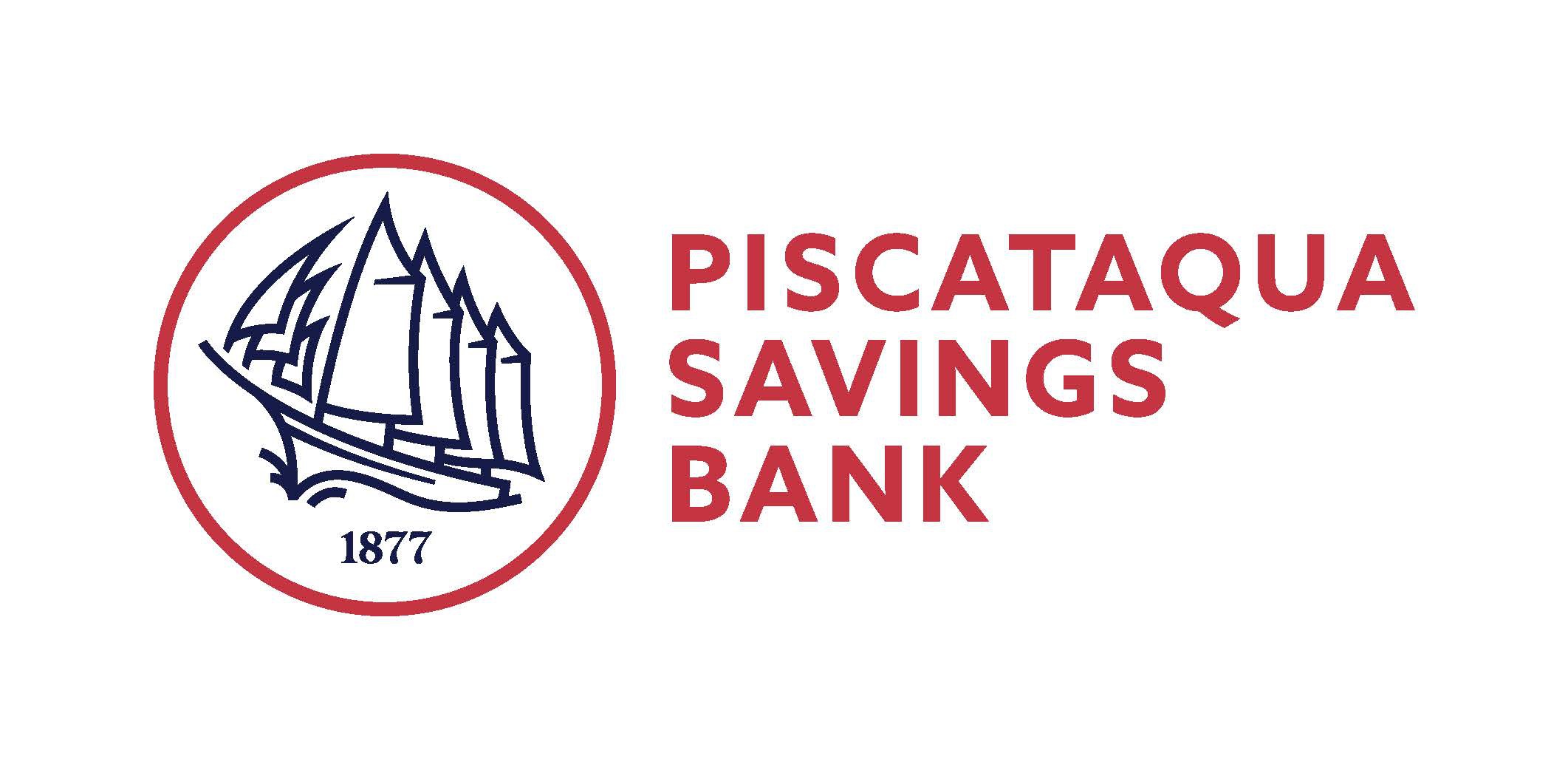Sponsors
Message from the President

As the Portsmouth Symphony Orchestra embarks on this, it’s 25th season, our mission to entertain, educate and encourage the audiences of today and tomorrow has never felt more relevant. Making and experiencing music, in all forms, is a basic human instinct. Music is what connects us across geography, cultures and time. Music consoles us and inspires us. And music is for everyone.
Here on the Seacoast, the PSO takes its responsibility to keep the tradition of high-quality classical music alive and is committed, as part of this endeavor, to giving voice to talented composers and works from the genre that are perhaps less well known to audiences. We hope you’ll find this year’s programs reflect this ongoing commitment.
Just as a symphony is only made possible by the coming together of individual musicians to create something more than the sum of its parts, so too does the PSO as an organization rely on the contributions and investment of so many. This year we are grateful to our generous corporate sponsors, our committed individual donors, our community partners, my fellow board members, our talented Music Director John Page, the musicians, and of course YOU—our dedicated and enthusiastic audience.
Whether this is your first concert, or you are an annual subscriber, we are thrilled to have you as part of the PSO family. Welcome and thank you for your continued support.
Now, on with the season.
David Young
President of the Board of Directors
Message from the Music Director

There’s a lot to be excited about during the PSO’s 25th season. This year, the orchestra will be performing a collection of deeply evocative pieces that will challenge both the musicians and the audience to explore the full range of human emotions.
As we all know, landscapes have the power to inspire us and stir different emotions and many of this year’s composers were powerfully influenced by landscapes—Mahler by the Austrian lakes and mountains, Sibelius by the dramatic landscape of Finland, and Elgar by the bucolic rolling hill of England’s Malverns. Audiences can look forward to works by these composers as well as those by Walker, Still, Beethoven, and Fung.
We’ll also welcome talented guest performers Ben DiScipio (tenor) in December and Ko-Eun Yi (pianist) in March; and, for the New Year’s Eve concert, we welcome back guest conductor Dirk Hillyer. In June, audiences will be treated to a performance by the winner of the 2023 Young Artist Competition.
We’re looking forward to making music together and are so happy you are here to share it with us.

John Page
Music Director
Program Listing
Poem for Orchestra | William Grant Still |
Piano Concerto No. 5 in E-flat major, Op. 73, “Emperor” | Beethoven |
—Intermission— | |
Symphony No. 2 in D Major, Op. 43
| Jean Sibelius |
Soloist Ko-Eun Yi, Piano

Hailed by The New York Times as “the refined pianist”, pianist Ko-Eun Yi, the winner of the CAG Victor Elmaleh Competition, has earned praise for playing with “élan and fire and a surplus of bravura technique” (Cincinnati Enquirer). She has garnered numerous top prizes in her career, with successes at the 2010 World Piano Competition in Cincinnati and the 2010 Wideman International Piano Competition in Jackson, Mississippi. The Washington Post applauded her debut recital in DC: “a masterful technician … Her finger-work was immaculate, inner voices were keenly drawn out, and there was no lack of power when needed.”
Recent seasons have included concerto engagements with the Midland-Odessa Symphony in Texas (Prokofiev Concerto No. 3), University of Chicago Symphony (Gershwin Concerto in F), Garden State Philharmonic Orchestra (Beethoven Concerto No.5 ‘Emperor’), and Waterbury Symphony Orchestra (Saint-Saëns Concerto No.5 ‘Egyption’). Featured recitals have included appearances at David Geffen Hall at Lincoln Center, Pittsburg State University in Kansas, and Florence Chamber Music Series of South Carolina. Additional solo performances include engagements at The Van Cliburn’s Chopin Festival in Fort Worth, Mostly Mozart Festival at Lincoln Center in Manhattan, Atlantic Music Center in Florida and the Artist Series of Tallahassee, plus numerous recitals throughout the greater New York area.
She has been featured on WQXR’s long-running Young Artists Showcase program, including a live interview and performance in studio, and she was also invited to participate in WQXR’s June 2016 Chopin Piano Marathon, with a live video-stream of her performances of Chopin’s Ballade No.1 and Scherzo No.1, followed by later audio broadcast. Her recordings were aired in WFSU in Tallahassee, WCRB in Boston, WFMT in Chicago, WETA in Washington, WRR in Texas, and WVIA in Philadelphia.
The Cincinnati Enquirer praised her Gold medal-winning concerto performance at the World Piano Competition: “…a fantasy world of shimmering sounds and colors. Her playing was at once flawless and dazzling…” Additional concerto highlights for Ko-Eun include performances with the Barcelona, Jerusalem, and Boston, Roswell and New West Symphony Orchestras, the Seoul Philharmonic Orchestra, and the Aspen Concert Orchestra, working with such conductors as Lawrence Foster, Leon Fleisher, Christopher Wilkins, and Marcelo Lehninger. She toured South America playing Saint-Saëns concerto No. 2 with the New England Youth Philharmonic Orchestra conducted by Benjamin Zander.
A compelling recitalist, Ko-Eun has given solo concerts around the U.S. at Carnegie Hall and Lincoln Center’s David Geffen Hall and Alice Tully Hall in New York City, the Phillips Collection in Washington, DC, the Dame Myra Hess Series in Chicago, Mount Holyoke College in Massachusetts, as well as internationally in Spain and South Korea. At the Concert Artists Guild Competition in 2013, Ko-Eun was also awarded the Victor & Sono Elmaleh Piano Prize for winning the nationally recognized competition.
Born in Seoul, South Korea, Ko-Eun Yi began her piano studies at the age of three. She earned her Bachelor and Master of Music degrees at The Juilliard School studying with Jerome Lowenthal and completed her Professional Studies degree with André-Michel Schub at Manhattan School of Music. She earned a Doctor of Musical Arts degree from Stony Brook University, as a student of Christina Dahl.
Musicians
Violin I
- Zoia Bologovsky
Concertmaster - Nicole Wendl
Assoc. Concertmaster - Jeongyoon Han
- Rachel Swanson
- Aniko Geladze
- Louise Kandle
- Lorna Ellis
- Becca Bannon
- Sargis Karapetyan
- Jill Good
- Stanley Silverman
- Susan Holcomb
Violin II
- Ashley Offret*
- Susan Streiff**
- Jeff Sullivan
- Lisa Brooke
- Diana Bourns
- Susan Kirchhausen
- Megan Fedor
- Ashley Freeman
- Evelyn Laux
- May-Win Thein
- Robert Lehmann
- Abigail Sykes
Viola
- Theresa Jaques*
- Karen McConomy**
- Jan Heirtzler
- Eric Salas
- Wendy Keyes
- Lauren Alter
- Maggie Chutter
- Thalia Dain
- Craig Peverly
- Michele Boulanger
- Cello
- Gary Hodges*
- Larry Veal**
- Melissa Ambrose
- Fay Rubin
- Kurt Villiard
- Lauren Wool
- Kari Jukka-Pekka Vainio
- Priscilla Chew
- Zachary Larson
Double Bass
- Scott Kiefner*
- David Hirsch
- Robert Hoffman
- Jason Noah Summerfield
- Nathan Therrien
Flute
- Aubrie Dionne*
- Erin Dubois
- Laurel Crawford
Piccolo
- Erin Dubois
Oboe
- Sarah Krebs*
- Catie Merrill
- Jill Hoffmann
English Horn
- Jill Hoffmann
Clarinet
- John Ferraro*
- Santiago Baena Flórez
- David Young
Bass Clarinet
- Santiago Baena Flórez
Bassoon
- Melissa Grady*
- Rick Shepard
Contrabassoon
- Rick Shepard
Horn
- Orlando Pandolfi*
- Susan Williams*
- Dirk Hillyer
- Kristin Olse
Trumpet
- Adam Gallant*
- Mark Zielinski
- David Shepherd
Trombone
- Josh Gagnon*
- Ben Sink
- Phil Hyman
Tuba
- Crystal Metric*
Timpani
- Steve Cirillo*
Percussion
- Michelle Tucker*
- Jeff Sagurton
- Sabrina Lai
Harp
- Sorana Scarlat
Celesta
- Sally Naredla
Perform with the PSO
The Portsmouth Symphony Orchestra seeks classical musicians in the community to audition for a place in the orchestra.
We invite all musicians, from professionals and educators to devoted amateurs and highly
accomplished students to audition for a place in the orchestra.
Poem for Orchestra
William Grant Still
by René Spencer Saller
Dean’s List
Nicknamed the “Dean of African-American composers,” William Grant Still completed more than 150 works, including eight operas and five symphonies. In 1935 he became the first African American person to write a symphony that was performed by a major orchestra; the next year he was the first to conduct a major orchestra. In 1949, his opera about Haiti, Troubled Island, was produced by the New York City Opera—another historic first.
Still was born on May 11, 1895, in Woodville, Mississippi, to college-educated teachers. His father, who was also the town bandmaster, died when Still was three months old. He and his mother moved to Little Rock, Arkansas, where she remarried. He began taking violin lessons at age 14 and taught himself viola, cello, double bass, clarinet, oboe, and saxophone. In 1911 he enrolled at Wilberforce College in Ohio, where he directed the band. His studies at Oberlin Conservatory of Music were interrupted by his Navy service. He played as a sideman for bluesman W.C. Handy, who brought him to Memphis and then New York City, where he became an oboist in Eubie Blake’s pit band as well as a successful arranger for theater orchestras and jazz and blues artists. He also studied with the influential atonalist Edgard Varèse.
In 1931 Howard Hanson conducted Still’s Symphony No. 1 (Afro-American), and the 36-year-old composer’s career took off, with commissions from several orchestras. In 1934 Still received a Guggenheim Fellowship and moved to Los Angeles, where he arranged film scores and popular music while honing his own powerful musical idiom: a blend of European post-Romanticism, jazz, blues, and spirituals.
Composed in 1944 for the Cleveland Orchestra, Poem for Orchestra exemplifies Still’s singular style. Moving from turbulent dissonance to sensuous lyricism, it concludes with a hopeful but ambiguous chord. According to his wife, Verna Arvey, Still was “inspired by the concept of a world being reborn spiritually after a period of darkness and desolation.”
©2019 by René Spencer Saller
Reprinted with permission
Piano Concerto No. 5 in Eb Major, op. 73 ("Emperor")
Ludwig van Beethoven
It is Mozart, of course, to whom we owe the creation of the mature, symphonic piano concerto. Following in his stead, Beethoven wrote five works in this genre; the first two were composed in the 1790s and owe much to the example of Mozart. The third, in C minor, was completed in 1803, around the time of his second symphony, and it is a far darker and impassioned work than the previous ones. By the time of the fourth concerto, finished in 1806, Beethoven had undergone remarkable growth as a composer. He had resolutely fought his way out of the deep suicidal depression occasioned by his increasing deafness. The monumental Eroica (third symphony), his opera, Fidelio, and the Rasumovsky string quartets had been created, and revealed the musical power, psychological depth, and progressive imagination of the mature composer. As such, the fourth piano concerto occupies a significant place in his oeuvre, with the rôle of the piano assuming greater strength and independence than in the earlier concertos. The fifth concerto (the moniker, “Emperor,” has no real meaning, having been attached later in circumstances not related to the composer, although it must be admitted, it’s not inappropriate, at all, if you must have an nickname) thus stands at the end of his efforts in the genre. It is a major work, not only in its intrinsic artistry, but also marks the culmination of an extraordinary period of inspiration and production on the part of the composer. That time began more or less in 1803 with the great third symphony, the Eroica, went on to include other major works in the “heroic style,” and ended in 1809 with the fifth piano concerto. Many of them are in the key of Eb major, which seems to have been Beethoven’s key of choice when essaying a bold, dynamic, confident work.
As he matured, Beethoven, like many great artists pushed the limits of the artistic conventions of his milieu; one has only to think of the challenging nature for performer and listener alike of the late string quartets and piano sonatas. That was certainly true of many aspects of his fourth piano concerto, and even more so for the fifth. The latter is a significant work in all regards, not the least for its great length—one of the longest of his symphonies and concertos–but not a measure too long for his formidable execution of the musical architecture. It unfortunately marks another milestone: it was the first of his concertos that he did not perform, owing to the significant deterioration of his hearing, which made collaboration with the orchestra impossible.
Like the fourth concerto it begins unconventionally, the piano playing the opening bars with the orchestra. The beginning consists simply of three great hammer strokes in the orchestra, after each of which the piano plays a short roulade of arpeggios, trills, and other cadenza-like gestures, in a style not unworthy of Chopin. The orchestra immediately follows with a vigorous statement of the main theme, a simple, but stately one, in the Beethovenian tradition, and not inappropriate for the grand nature of the work. Soon, the quieter second theme comes, first in the minor in the woodwinds, and immediately in the major in the horns. The orchestra works its way through to the end of the section and the piano finally enters with a scale, a trill, and the main theme from the opening measures. There then ensues one of Beethoven’s longest movements, in which the soloist and orchestra engage in a dialogue that stunningly exemplifies the creativity and genius of the composer, as they work out the themes on their way to the recapitulation–heralded by a repetition of the hallmark opening chords and piano flourishes.
The profound serenity, beauty, and reflective eloquence of the slow movement stand at the apex of the composer’s gift in this voice. The gentle main theme is primarily stepwise, rather like a simple chorale, played first by the orchestra. The rich, freshness of the opening is accomplished in no small part by Beethoven’s choice of key—B major, a remote key, but really an enharmonic version of one of his signature harmonic relationships. The piano enters, and engages in a series of explorations of the material, in a free and almost improvisatory fashion, interspersed with meditative, straightforward statements of the eloquent theme. This sublime, discursive mood continues–certainly no one is in hurry for it to end—but it surely must, and the composer again pulls out a bit of trickery to bring on the finale. A soft, sustained B natural in the bassoons and horns descends to Bb, the strong note in music that psychologically takes us to Eb , the main key of the concerto, and where we must go for the last movement. But the intent is mysterious: we hear a brand new theme in the piano, softly and deliberately stated, and then, without notice, we vigorously plunge straightway into the happy last movement with that new theme its subject. It’s a romping, stomping affair which some have compared to a rough German dance—it’s certainly in the vein of his seventh symphony, which he would compose two years later.
The shape is simple—only a diversion in the middle interrupts this dancing, active material. There, the pianist explores briefly a few fresh keys and contrasting ideas, but soon enough, the driving, dancing fun resumes, as the smashing conclusion seems to near. One more trick, though: gradually the intensity appears to be waning, not growing, and a quiet duet between the soloist and the timpani portends a tranquil ending. Not so—for a triumphal outburst in Beethoven’s best manner from the whole orchestra clinches the matter.
—Wm. E. Runyan
© 2015 William E. Runyan
Symphony No. 2 in D Major, op. 43
Jean Sibelius
The compositions of Jean Sibelius constitute a case study in the capriciousness of musical taste and the power of the artistic avant-garde. Pigeonholed by many as primarily a Finnish nationalist, whose dark, remote music was a shallow representative of Romanticism’s last gasps, Sibelius was nevertheless deemed the champion of American and British conservative musical tastes between the world wars. Typical was Olin Downes, music critic of the Times, whose relentless public support of Sibelius bordered on sycophancy. Likewise, Koussevitsky, conductor of the Boston Symphony Orchestra, programmed a cycle of Sibelius’s symphonies, and dogged the composer to finish the eighth—which he never did. But, those who favored the avant-garde of Stravinsky, Schönberg, and company—and that included most of continental Europe, and American intellectuals—were scathing in their contempt. One respected and well-known critic entitled an essay about Sibelius, “The Worst Composer in the World.” These controversies, and Sibelius’s life-long struggle with alcoholism and depression no doubt played a signal part in his composing nothing of significance from the nineteen thirties until his death in 1957 at the age of 91.
But tastes change, and the current crop of composers and scholars now take a more balanced view of Sibelius’s compositions. His seven symphonies enjoy renewed respect, although the ever-popular second symphony has long been a repertory standard, and–other than the evergreen Finlandia—is his most popular work. It is not incorrect, of course, to recognize the deeply informing rôle of nationalist Finnish elements in his music style. He consciously and assiduously studied and absorbed the musical and literary heritage of the Finnish culture and adroitly folded them into a unique personal style. He was completely taken by the Finnish national epic, the Kalevala, and early on his musical style reflected these cultural elements, from his melodic choices to the stories behind his tone poems. His symphonies are large soundscapes that surge and ebb, whose melodies often appear first as small kernels of a few notes whose significance is easily overlooked. But, as the music unfolds and these bits of melody appear in a kaleidoscope of identities, they meld together into great torrents of themes. Sibelius was a master of orchestration, and most listeners easily accept the inevitable comparisons to the bleak, cold, primæval landscapes of Finland.
Finland for centuries had been under Swedish hegemony, and then in the nineteenth century under Russian control. Many still remember Finland’s heroic stand against the Soviets early in WWII (although their later coöperation with the Nazis troubled some). Sibelius’s second symphony depicts, indeed, a defiant and bold stand for Finnish independence during its struggles with Russia around the turn of the twentieth century. Composed in 1902, the symphony is usually understood as a gesture of defiance in the face of the Tsar, although the composer never suggested this view. The first movement opens quietly in a fashion typical of the composer’s style—no big tunes to hear and remember, but, as alluded above, just some little fragments that gradually assemble themselves. Then the process reverses itself, and the bits close the movement peacefully. The second movement is a slow sonata form that begins with a remarkable pizzicato section in the cellos and double basses, followed by a somewhat sinister theme in the bassoons. In a fashion traditional from Mozart on we next hear a lyrical contrasting theme in the strings. Most symphonies use a brisk dance form for third movements. Here Sibelius begins with energetic string figurations that soon are followed in the middle sections by a pastoral oboe solo. Then, as usual in these matters, the string section returns. This movement is blended right into the beginning of the famous last movement, one almost universally loved—well, at least known—by music lovers everywhere. Clear themes prevail, the most familiar one being the ascending three note stepwise motif. The movement closes heroically with a huge statement of this melody, with the complete brass section taking the lead. The careful listener will note that this little theme has appeared in many guises throughout the whole work. This is typical of Sibelius’s craftsmanship and integrated approach to composition. In many ways this glorious finale affords the composer the last laugh over his “sophisticated” detractors.
—Wm. E. Runyan
© 2015 William E. Runyan
Up Next
Donors
- Donna Saunders & Michael Chubrich
- Josephine Lamprey
- Robert & Cyndi Bear
- Lawrence & Linda Connell
- Margot Doering
- Mrs Roger M Doering
- Chris Dwyer & Mike Huxtable
- Lorraine T. Keazer
- Clinton Frederick Miller MD
- The Montrone Family
- Kate & David Murray
- Andrew Park
- QHT Inc.
- Ellen Griffin Saas
- Mike Schwartz & Sharyn Potter
- Lucinda Spaney
- Rachel & Nate Swanson
- Katherine Wells Wheeler
- The Allayne & Douglas Wick Foundation
- David & Sarah Young
- Catherine Anderson
- Kevin Baum
- Diana Bourns
- Steve Cirillo
- Jeffrey & Penelope Gilbert
- Craig & Shirley Peverly
- Fay Rubin
- Anonymous
- Anonymous
- John Ahlgren
- Chris & Mimi Brett
- Don & Mary Jo Briselden
- Louis F. Clarizio DDS
- Sally Crawford & Peter Wells
- Jeff & Barbara Diefendorf
- Charles Doleac
- David & Marion Ellis
- Fred & Barbara Engelbach
- Jeanette & Conrad Fagone
- Brian Fitzgerald
- Jameson & Priscilla French
- Thomas Harford
- David Hirsch
- Judith Howard & David Meikle
- Lindsey Humes
- Edward Mallon
- Elizabeth Connell Nielsen
- Sherrill Nixon
- Prince/Bergh Family Fund
- Barbara & Robert Schultz
- Jeanne & Derek Stern
- Barbara Sweet
- May-Win Thein
- Michael Thiel & Gail Richard
- Jo Ellen Thomas
- David Tong
- Bruce Valley
- Andre & Edwinna Vanderzanden
- Philip D Winslow
- Nancy Zadravec
- Anonymous
- Richard Candee
- Ed & Janet Caylor
- La Belle Chocolat
- Rachel Connell
- Marcia Van Dyke
- Paul & Linda Hamlen
- Cynthia & Michael Harvell
- Andrew & Pamela Kulesza
- Jacqueline Palmatier
- David A. Taylor
- Robyn Aldo
- Robin Avery & Philip Dunphy
- James and Susan Baldini
- Fran I Bechtold
- Lawrence Cataldo
- Kenneth Clark
- Anthony Codding
- Gail Drobnyk
- Marvin Fry
- Kenneth Fuld
- Sarah Gayer
- Gilbert Loughlin Family
- Jan & David Heirtzler
- Louise Hirschburg
- Marylaine & David Hobson
- Robert C Larkin
- Keith Lauder
- Virginia Macdonald
- Frank Manter
- Elaine & Steven Molleur
- Bruce & Lori Myers
- Janine Quinn & David Frolio
- Emma Rous
- Johanna de Ruiter
- David & Eleonore Sanderson
- Lex Scourby
- Betsy Shelley
- James and Cheryl Verra
- Stuart & Gisela Wemple
- Mara Witzling & Peter Cass
- Gerald M Zelin
- Anonymous
- Alice Anderson
- Bess4sahara
- Peter Bowman
- Nancy Braese
- Frank Brako & Stacey Isles
- John Pendleton and Elizabeth Carruthers
- Phil Cocco
- Leslie Couse
- Michael Dater
- Lynn DiElsi
- Larry Drake
- Geraldine Eastler & Jonathan Sutton
- Kathryn Ellis
- Glenda & Ed Fischer
- Elaine X Fuller
- Helen Gettelman
- Susan Gough
- Gregory E Griffith
- Roy William Helsel
- Philip R Hepburn
- Mark & Mary Ann Janos
- Cynthia & Jeffrey Knapp
- Evelyn Laux
- Joyce & Donald Marchand
- Elissa Margolin
- Caroline McElroy
- Richard Mechaber
- Carol Miller
- Cliff Mommsen
- Alessandro Levi Montalcini
- Sarah Murphy
- Jane Page
- Caroline & Nathanael Piper
- Paula Rais
- Karen Rowland
- Lawrence Singer
- Martha E Stone
- Robert Sullivan
- Ann H Tarlton
- Heather & Len Thomsen
- Mr & Mrs Richard F Topping
- Carolyn Vinica
- David & Ilona Weber
- Anonymous
- Anonymous
Board of Directors
- David Young, President
- Kate Murray, Vice President
- Jeffrey Gilbert, Treasurer
- Fay Rubin, Secretary
- Lawrence Connell
- Beverly Giblin
- Melissa Grady
- Jan Heirtzler
- Paul Lanzoni
- Craig Peverly
- Eric Salas
- Donna Saunders
- Michael Schwartz
- Rachel Swanson
Staff & Volunteers
- Caroline Amport Piper, Director of Communications
- Aubrie Dionne, Director of Outreach
- Erin Dubois, Administrative Assistant
- Jan Heirtzler, Librarian
- Craig Peverly, Equipment Manager
- Adam Gallant, Personnel Manager
- Rachel Swanson, Graphic Design










